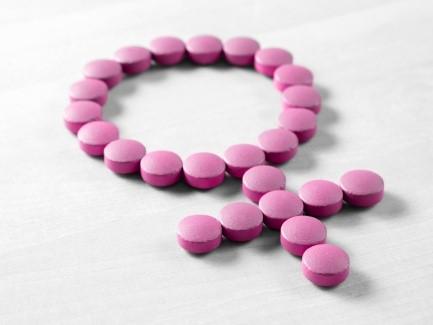
HRT: fact-checking risks and benefits
Peer reviewed by Dr Krishna Vakharia, MRCGPAuthored by Ellie BroughtonOriginally published 13 Feb 2024
Meets Patient’s editorial guidelines
- DownloadDownload
- Share
- Language
- Discussion
In the UK, prescriptions for HRT rose by 47% in 2022 to 2023, compared to the previous year. But as women grapple with shortages of HRT in some parts of the country, myths persist about side effects and risks of a therapy that has been long mistrusted and overlooked. Here we fact check the risks and benefits of Hormone Replacement Therapy for menopause.
In this article:
Continue reading below
What is HRT?
Hormone replacement therapy (HRT) is a treatment that replaces the hormones that decrease when you're going through the menopause, which can reduce the symptoms you're experiencing. HRT is given as two hormones, oestrogen and progesterone, if you have a womb (uterus) and as oestrogen-only if you no longer have a womb.
Types of HRT
Topical HRT
HRT can be applied topically as a gel, cream, patch, pessary or ring. Topical products are applied on the surface of the skin.
Oral HRT
Tablets that you swallow are a commonly-prescribed form of HRT.
Combined HRT - either in topical or oral forms
If they still have a womb, women take a combination of oestrogen and progesterone hormones in their treatment.
Oestrogen-only HRT
Oestrogen-only HRT is usually only recommended to people with no womb, for example after hysterectomy. These come in topical and oral forms.
HRT risks
Professor Anne MacGregor, a member of the British Menopause Society's advisory board, says that perceptions of risk have changed significantly over time as increasingly safer forms of HRT have been developed.
"Women worry about breast cancer but obesity, smoking, and drinking alcohol regularly carry a greater risk of breast cancer than taking HRT," she says.
"Blood clots have been another concern but topical oestrogen as a skin patch, gel or spray does not increase your risk of blood clots.
"For any individual woman, the risks associated with taking HRT need to be balanced against the benefits, including symptom control, but also long-term protection against osteoporosis, cardiovascular disease and vulvovaginal atrophy - thinning and drying of the vulva and vagina."
Does HRT increase risks of breast cancer?
Yes, it does increase your risk, but nowadays the benefits of HRT are thought to outweigh the risks. The NHS advises that combined HRT is linked with a small increase in the risk of breast cancer, but there is little or no change with oestrogen-only HRT. Your risk depends on how long you use HRT, and this falls after you stop taking HRT.
Cancer Research UK has a specific resource about cancer risk from HRT.
Does HRT increase risks of endometrial cancer?
If you still have a womb and solely take oestrogen-only HRT, this would increase your risk of endometrial cancer. This is why oestrogen-only HRT is never given on its own to those with a womb. Taking combined HRT with the added progesterone protects your womb lining from the effects of oestrogen, and therefore doesn't affect your cancer risk. However, if high (untested and unlicensed) doses of oestrogen are given but these are not matched by higher doses of progesterone, theoretically there could be an increased risk of endometrial cancer. Research is still ongoing in this area.
Does HRT increase the risk of blood clots?
Yes, from tablets - but not patches. People with a history of blood clots may not be able to be given HRT. Doctors also advise controlling high blood pressure before starting HRT.
Dr Paula Briggs, consultant at Liverpool Women’s NHS Foundation Trust and chair of the British Menopause Society (BMS), says doctors may recommend topical HRT to patients with a risk of blood clots: "When we give oestrogen through the skin, it doesn't affect the risk of having a blood clot. So, for a patient who's got a BMI of, say, 30 or more, that patient already has an inherent risk, and you wouldn't want to make that risk any higher by giving oral oestrogen.”
Continue reading below
HRT benefits
Managing night sweats
Many people experience hot flushes and night sweats during the menopause, which can affect your mood and sleep, as well as being uncomfortable in themselves.
Reducing vaginal dryness
During the menopause, people may notice their sex drive falls, and their vagina may get drier. HRT may be able to help people keep up their sex life and reduce the discomfort of these physical changes.
Osteoporosis
HRT has also been shown to keep bones strong and prevent osteoporosis, which becomes more common in women after the menopause.
How to reduce risks from HRT
After you've familiarised yourself with the different types of HRT, and the way risks vary between these types, your GP can tell you what HRT you can be given and what they advise.
Continue reading below
What can you do if you can't take HRT?
Beyond HRT, doctors often recommend diet and lifestyle changes - for example, stopping smoking and cutting back on caffeine, alcohol and spicy food. Some doctors might recommend non-hormonal medication to treat hot flushes and night sweats, and some people find self-guided CBT helps with sleep changes during menopause.
Professor MacGregor says that many people who think they cannot take HRT may actually be able to, depending on the type of cancer and the treatment they have had, and most can use vaginal oestrogen.
"For those who can't take HRT, there are plenty of other ways to help their symptoms and long term health, although it is true to say that they don't provide the same all-round benefit of HRT," she says.
Patient picks for Menopause and HRT

Hormones
What are the signs HRT is not working anymore?
Hormone replacement therapy (HRT) has transformed the lives of many women troubled by debilitating symptoms at menopause. But after taking HRT for a couple of years, some women find their symptoms begin to return. Why does this happen and what can be done to remedy the issue?
by Amberley Davis

Hormones
What causes menopause dizziness, and how can you manage it?
From hot flushes to mood swings and insomnia, it’s fair to say that going through the menopause can be difficult for many women. And for some, feeling dizzy can also make day-to-day life more challenging. But why does it happen - and what can you do about it?
by Lydia Smith
Article history
The information on this page is peer reviewed by qualified clinicians.
13 Feb 2024 | Originally published
Authored by:
Ellie Broughton
Peer reviewed by
Dr Krishna Vakharia, MRCGP

Ask, share, connect.
Browse discussions, ask questions, and share experiences across hundreds of health topics.

Feeling unwell?
Assess your symptoms online for free
Sign up to the Patient newsletter
Your weekly dose of clear, trustworthy health advice - written to help you feel informed, confident and in control.
By subscribing you accept our Privacy Policy. You can unsubscribe at any time. We never sell your data.